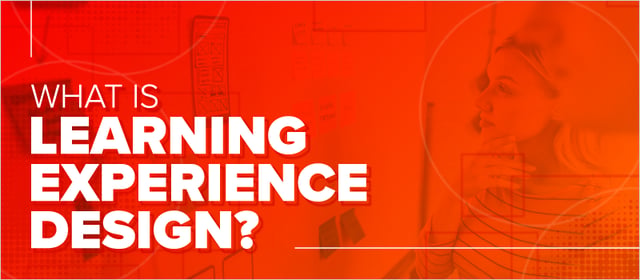
Studies have shown that formal instruction is only a small part of a worker’s overall learning. The path to proficiency includes:
- 10% Formal Training
- 20% Informal/Coaching
- 70% On-the-Job Experience
Traditional instructional design methods effectively cover the formal training, but learning experience design encompasses all aspects of the 70-20-10 theory and can speed up the path to proficiency.
So, What is Learning Experience Design (LXD)?
The process of facilitating the development of skills (expertise, proficiency) by providing learners with a systematic set of learning activities (experiences) supported by content, feedback, and technology.
Another way of describing LXD is to call it the science and art of creating experiences that help learners fulfill the learning outcomes they need or want, in a learner-centered and goal-oriented way.
Learning Experience Design draws on many disciplines familiar to those who create training, including:
- Learning Science
- User Experience Design
- Design Thinking
- Learning Technology
- Knowledge Harvesting
- Content Design and Curation
Marty Rosenheck, our Director of Talent Development and Consulting, is an expert on learning experience design. He has given many conference presentations and webinars on this topic.
“I did my doctorate in Cognitive Science and studied how people develop expertise, asking ‘how do you use technology to accelerate that process of developing proficiency or developing skills and expertise?’”
-Marty Rosenheck
Key Principles of Learning Experience Design:
- Focus on results
- Learner-centered
- Experience Rules
- Content is a servant
- Feedback and reflection are key
- Situated learning
- Iterative design
- Technology-enabled
When employing Learning Experience Design, you need to ask yourself what the learning goals are and what support is needed to drive behavior change and achieve those learning goals. Then you need to give the learner the chance to act, to practice the tasks either through a virtual reality immersion, an online simulation, or in-person practice. Experiential learning is the heart of LXD.
“Experience forges the mental link between knowledge and the way it is applied to situations.”
Feedback Is Essential
In addition to providing opportunities to practice the actual job tasks, if you can provide content and feedback at the teachable moment, you’ll greatly increase retention. Feedback enables reflection. The combination of reflection and experience drives greater learning comprehension and retention. With the right technology, it's easy to provide feedback at the moment of learning.
Our Custom Solutions team can help you implement Learning Experience Design as you plan out your next training program. Contact us to learn more.








